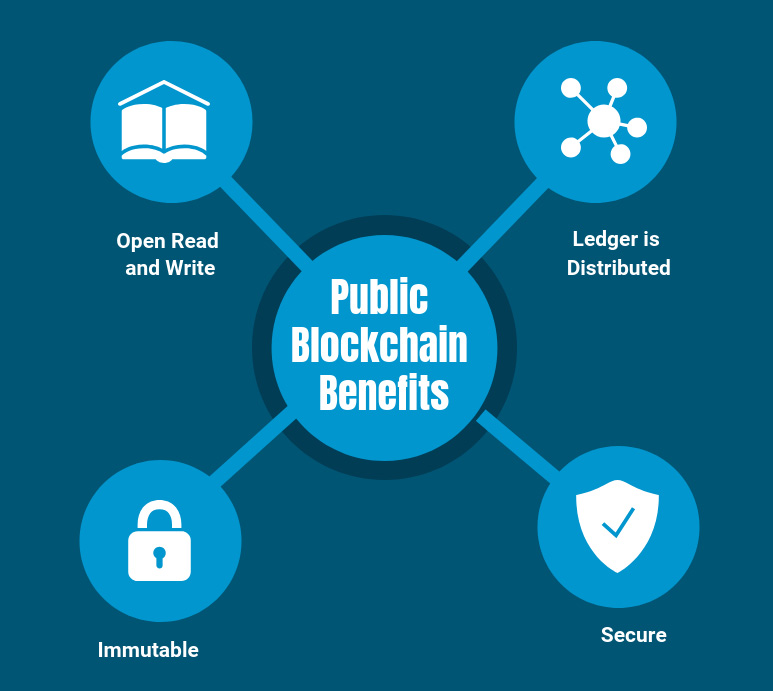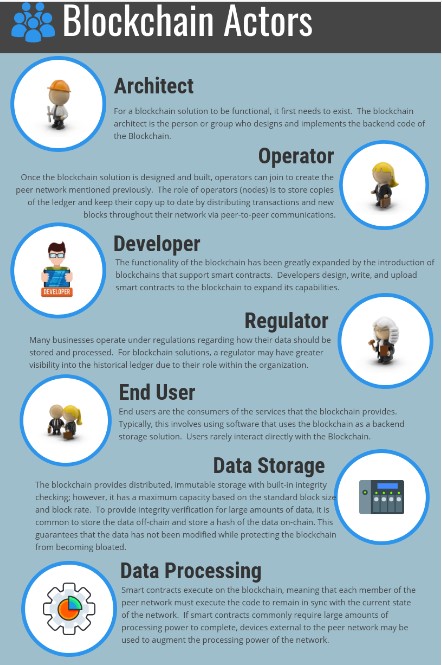The next generation technology which is going to disrupt the market more is Blockchain. The next technology to have that kind of impact isn’t some of the buzzwords you hear. It’s not big data. It’s not artificial intelligence. It’s not even social media. It’s BLOCKCHAIN!

Blockchain has something to do for every business, every society, and for everyone. For an example to illustrate blockchain, let’s look at the following routine activity. When you attach a file, a Word document, an Excel sheet, a PDF to an email, you aren’t sending an original. You are actually sending the recipient a copy, and that’s a great way to move information around. But it’s not so great when it comes to things like money, stocks and bonds, music, loyalty points, intellectual property, tickets to a game or concert. Then, sending a copy is suddenly a very bad idea.
Let’s look at an example. If I send you tickets to a concert, it’s important that I don’t send you a copy. You now own the original asset and I can no longer use or sell those tickets. Similarly, if I send you $100, it’s important that I still don’t own the $100, or have the ability to send it to anyone else. Both of these examples illustrate a double spend problem, and those can be eliminated with blockchain.
Blockchain allows people to exchange assets and perform transactions without a third party. Imagine a world where you don’t need intermediaries. While traditionally we have needed central authorities to trust one another and fulfill contracts, blockchain makes it possible to have our peers guarantee that for us. But how? Assets, like we’ve discussed, are no longer stored in a central place, but distributed across a global ledger, using the highest level of cryptography. When a transaction is conducted, it’s posted across tens of thousands of computers around the globe. These transactions are recorded as blocks.
Let’s imagine a sheet of paper that has 25 lines. When a sheet is filled up with 25 transactions, the block is validated via group consensus. Once the page has been validated, it is added to a stack of previously validated sheets. Each sheet on the stack can be assumed to be trustworthy because, once a sheet is validated, it can’t be changed. Because at this point, all the sheets are linked together. And to link our sheets together, we embed information from the previous sheet of paper into the new, recently validated sheet. In blockchain, our sheet of paper is equal to a block.
The act of embedding a previous block of information into the current block of information is called chaining, hence, the name blockchain. In order to compromise or hack a blockchain network, someone would have to gain control of the majority of computers in that network. This is extremely difficult to do. There is no longer a single point of failure, and this is what makes blockchain infinitely more secure than what we have today.
Blockchain isn’t just for assets, though. It extends to contracts. These are called Smart Contracts. And what are they exactly? What they sound like. A smart contract self-executes and handles enforcement, the management, and performance of agreements between people. Examples of smart contracts include insurance policies, copyrighted content, escrow and lending, wills, and trusts. Smart contracts will revolutionize how we do business.
How blockchain works
A blockchain ledger consists of two types of records, individual transactions and blocks. The first block consists of a header and data that pertains to transactions taking place within a set time period. The block’s timestamp is used to help create an alphanumeric string called a hash.
After the first block has been created, each subsequent block in the ledger uses the previous block’s hash to calculate its own hash. Before a new block can be added to the chain, its authenticity must be verified by a computational process called validation or consensus. At this point in the blockchain process, a majority of nodes in the network must agree the new block’s hash has been calculated correctly. Consensus ensures that all copies of the distributed ledger share the same state.
Once a block has been added, it can be referenced in subsequent blocks, but it cannot be changed. If someone attempts to swap out a block, the hashes for previous and subsequent blocks will also change and disrupt the ledger’s shared state. When consensus is no longer possible, other computers in the network are aware that a problem has occurred and no new blocks will be added to the chain until the problem is solved. Typically, the block causing the error will be discarded and the consensus process will be repeated.
Blockchain is a type of distributed ledger for maintaining a permanent and tamper-proof record of transactional data. A blockchain functions as a decentralized database that is managed by computers belonging to a peer-to-peer (P2P) network. Each of the computers in the distributed network maintains a copy of the ledger to prevent a single point of failure (SPOF) and all copies are updated and validated simultaneously.
Blockchain platforms
Blockchain platforms can be either permission-less or permissioned . In a public, permissionless blockchain like Bitcoin, every node in the network can conduct transactions and transaction fees and participate in the consensus process. In a private, permissioned chain like Multichain, every node might be able to perform transactions, but participation in the consensus process is restricted to a limited number of approved nodes.
Blockchain consensus/validation algorithms
Choosing which consensus algorithm to use is perhaps the most crucial aspect of selecting a blockchain platform. There are four standard methods blockchain and other distributed database platforms use to arrive at a consensus. Generally, public platforms choose algorithms like Proof of Work because they require a lot of processing power to compute, and are easy for other network nodes to verify.
- Proof-of-work algorithm (PoW)
- Practical byzantine fault tolerance algorithm (PBFT)
- Proof-of-stake algorithm (PoS)
- Delegated proof-of-stake algorithm ( DPoS )
Who uses blockchain?
Retail outlets, Banks and financial institutions across the globe are exploring how they can use blockchain to improve security. Other industries, including healthcare, government and technology, are investigating how they can use blockchain to enable the secure exchange of data such as personal health information, digital assets like downloaded entertainment and real estate deeds. Manufacturing and other similar businesses also see some potential to leverage blockchain to manage smart contracts as well as track materials as they move through their supply chains.
Advantages:
- This provides immutability and security.
Blockchain Components:
- Ledger: A distributed, immutable historical record
- Peer Network: Stores, updates, and maintains the ledger
- Membership Services: User authentication, authorization, and identity management
- Smart Contract: Program that runs on the blockchain
- Wallet: Stores users’ credentials
- Events: Notifications of updates and actions on the blockchain
- Systems Management: Component creation, modification, and monitoring
- Systems Integration: Integration of blockchain with external systems.

Ledger: A distributed, immutable historical record
The goal of the blockchain is to create a distributed, immutable record of the history of the blockchain called the ledger.
Peer Network: Stores, updates, and maintains the ledger
The ledger is stored, updated, and maintained by a peer network. Each node in this network maintains its own copy of the ledger. It is the job of the network as a whole to come to a consensus on the contents of each update to the ledger. This ensures that each individual copy of the ledger is identical without requiring a centralized “official” copy of the ledger.
Membership Services: User authentication, authorization, and identity management
On some blockchains, anyone can join the peer network and all network members have equal powers and authority. Permissioned blockchains require authorization to join and Membership Services authenticates, authorizes, and manages the identity of users on the blockchain.
Smart Contract: Program that runs on the blockchain
The original blockchains were designed to simply allow financial transactions to be performed and stored in the historical ledger, and had limited configurability. Since then, blockchains have evolved so that some have become fully functional distributed computers. Smart contracts are programs that run on the blockchain. Users can interact with smart contracts in a similar way that they interact with programs on a standard computer.
Wallet: Stores users credentials
In blockchain, the user’s wallet stores their credentials and tracks digital assets associated with the user’s address. The wallet tracks user credentials and any other information that may be associated with their account.
Events: Notifications of updates and actions on the blockchain
The blockchain’s ledger and the state of the peer network are updated by events. Examples of events include the creation and dispersion of a new transaction across the peer network and the addition of a new block to the blockchain. Events may also include notifications from smart contracts on blockchains that support such contracts.
Systems Management: Component creation, modification, and monitoring
The blockchain is designed to be a long-lived system in a field that is constantly evolving. Systems management provides the capability of creating, modifying, and monitoring blockchain components to meet the needs of its users.
Systems Integration: Integration of blockchain with external systems
As blockchain has evolved and increased in functionality, it has become more common to integrate blockchains with other external systems, commonly through the use of smart contracts. While this is not a specific component of the blockchain, systems integration is included to acknowledge this capability.
Blockchain Actors

A Blockchain Architect is the designer of the blockchain solution. For a blockchain solution to be functional, it first needs to exist. The blockchain architect is the person or group who design the blockchain.
The Blockchain Operator stores, maintains, and updates the blockchain ledger. Once the blockchain solution is designed and built, an operator can join to create the peer network mentioned previously. The role of the operator is to set up and maintain peers within the network.
The Blockchain Developer creates smart contracts to run on the blockchain. The functionality of the blockchain has been greatly expanded by the introduction of blockchains that support smart contracts. Developers design and upload smart contracts to the blockchain to expand its capabilities. In addition to implementing the smart contracts, you may also have front-end developers who implement applications that access the blockchain (i.e., the applications initiate the transactions on the blockchain).
The Blockchain Regulator: Many businesses operate under regulations regarding how their data should be stored and processed. For blockchain solutions, a regulator may have greater visibility into the historical ledger due to their role within the organization.
The End User is the consumer of services built around the blockchain. Typically, this involves using software that uses the blockchain as a backend storage solution. Users rarely interact directly with the blockchain.
Data Storage is represented by traditional databases for storing data off-chain. The blockchain provides distributed, immutable storage with built-in integrity checking; however, it has a maximum capacity based on the standard block size and block rate. To provide integrity verification for large amounts of data, it is common to store the data off-chain and store a hash of the data on-chain. This guarantees that the data is not being modified while protecting the blockchain from becoming bloated.
Data Processing is represented by an external system used for additional processing. Smart contracts execute on the blockchain, meaning that each member of the peer network must execute the code to remain in sync with the current state of the network. If smart contracts commonly require large amounts of processing power to complete, devices external to the peer network may be used to augment the processing power of the network.
